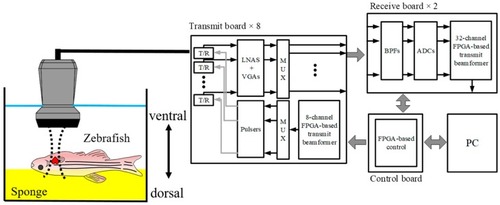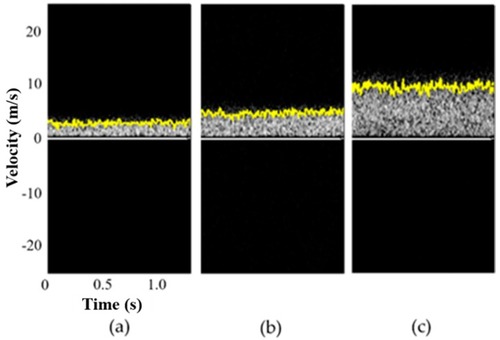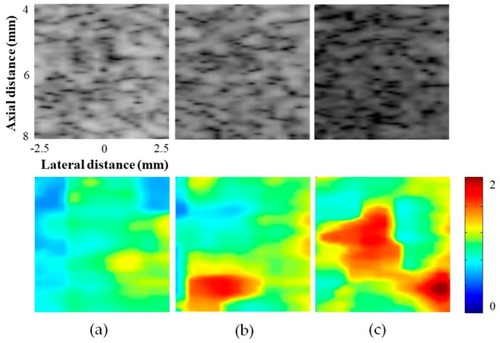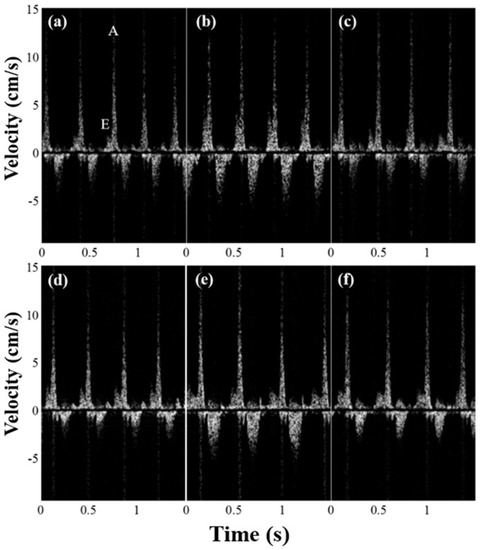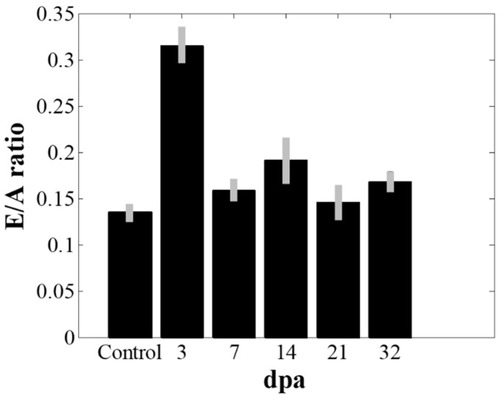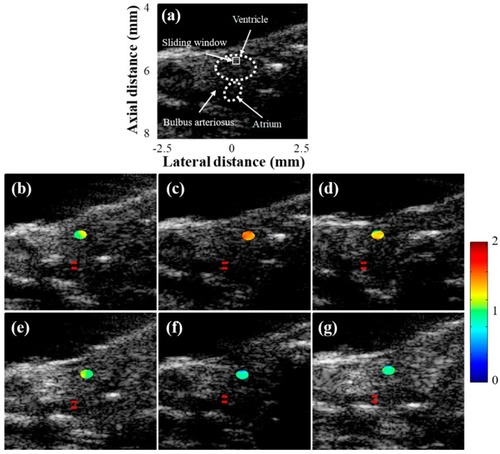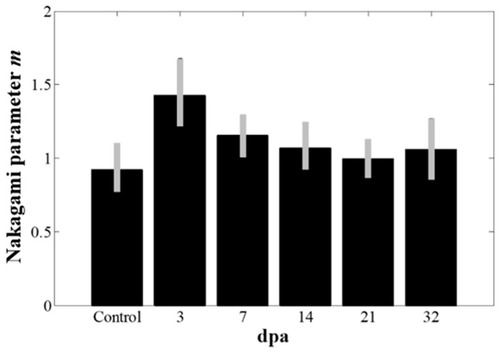- Title
-
Monitoring of Adult Zebrafish Heart Regeneration Using High-Frequency Ultrasound Spectral Doppler and Nakagami Imaging
- Authors
- Yeo, S., Yoon, C., Lien, C.L., Song, T.K., Shung, K.K.
- Source
- Full text @ Sensors (Basel)
|
Experiment setup for adult zebrafish heart imaging. The zebrafish was anesthetized and placed on a sponge (yellow box) to position the ventral side facing upwards, and the ultrasound array transducer was positioned above. |
|
Measured flow velocities using pulsed wave spectral Doppler imaging acquired from the flow phantom with velocities of ( |
|
Ultrasound B-mode images and corresponding Nakagami images from the tissue-mimicking phantoms with different scatterer concentrations of ( |
|
Spectral Doppler waveforms acquired from the adult zebrafish ( |
|
The changes of the |
|
( |
|
The changes of the Nakagami parameter |

